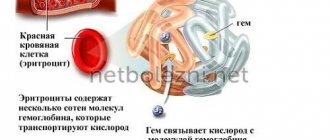What are antioxidants?
The body is comparable to a large plant. Various physiological processes take place on it every second. Oxygen is an important part of them. Because of it, the process of oxidation in tissues begins, and the resulting energy provides biological combustion.
Oxidants are responsible for this process. They neutralize harmful toxins, help the body cope with stress, and support organ health. But as soon as the amount of such an element reaches a critical level, free radicals appear. They penetrate the cells and begin not to restore, but to destroy them. This leads to the appearance of atherosclerosis, problems in the gastrointestinal tract, disruptions in the functioning of the heart muscle, and premature aging.
Antioxidants come to the rescue to restore natural balance. They slow down the formation of dangerous molecules. However, with constant exposure to negative factors, internal reserves are no longer sufficient. There is a need to additionally take foods rich in such compounds.
Antioxidants are natural or synthetic substances that protect cells from the effects of free radicals. They reduce the amount of active oxygen, normalizing organ function.
In addition to direct interaction with free radicals, such compounds bind to hydroperoxides. Beneficial cells destroy them and block catalysts. Antioxidants:
- help cells recover from injury;
- protect the body from harmful radiation;
- increase overall stress resistance;
- strengthen the immune system;
- reduce the risk of cardiovascular, cancer and other diseases.
Classification of antioxidants
Antioxidants are found not only in berries and fruits, but also in seafood, such as squid.
They are synthetic and natural. The first type includes medications, dietary supplements, and various components added to food products for more efficient storage. On the one hand, thanks to them, the life of certain dishes and canned food is extended, on the other hand, there is a risk of developing an allergic reaction, an asthma attack or edema.
Antioxidants are divided into:
- Enzymatic: present in all cells of our body.
- Low molecular weight: flavonoids, some vitamins and minerals.
- Hormones: steroid and sex hormones.
Enzyme species are of great benefit. Under their influence, the oxidizing product turns into hydrogen peroxide, then into water. A similar enzyme is present in almost all aerobic cells. Cells of a non-enzymatic nature interrupt interactions in free radicals. Food products and supplements contain predominantly this type of antioxidant.
Based on their ability to dissolve, compounds are divided into fat-soluble and water-soluble. The body needs both types to protect itself. Lipid-soluble antioxidants protect cell membranes from fat oxidation. Mainly found in cell membranes. Examples include vitamins A, E, carotenodins, and lipoic acid.
Water-soluble types include antioxidants that are found in biological fluids of the body. This type includes vitamin C, polyphenols and glutathione.
Reviews from real people
Where do many people think antioxidants are found?
Feedback on the forum
Feedback on the forum
Feedback on the forum
Feedback on the forum
There are many people, many opinions.
Features of antioxidants and causes of increased oxidation in the body
Some compounds restore damaged cells by donating their hydrogen atom. This property is especially important for DNA. There are also varieties that have a chelate effect. They are able to capture toxic metals, arsenic, mercury, retaining them, protecting the body from negative chemical reactions.
In the human body, processes of increased oxidation occur due to:
- poor nutrition;
- painful conditions;
- stress;
- smoking;
- alcohol abuse;
- taking medications and other reasons.
If all reactions in the body are not normalized in a timely manner, then a person quickly begins to age, his health deteriorates, and the body loses its resistance to stress. Other chronic diseases and malignant tumors may also develop.
What connections are impossible to do without?
A wide variety of antioxidant substances will bring optimal results to the body. One of the most powerful is glutathione. It is a peptide present in every cell of the body. It enhances the effect of other antioxidants that enter our body when taking vitamin complexes or through foods. The main function of glutathione is to protect the cell from mitochondria and carry out detoxification.
The following antioxidants are no less well known:
- Alpha lipoic acid. It enhances the action of certain cells if an inflammatory process occurs in the body. Helps quickly and effectively remove heavy metals from the body. This is the only component that can easily penetrate the brain.
- Ubiquinone. This substance stimulates the production of energy by cells, supports health, heart and immune system, and reduces the signs of natural aging.
- Resveratrol. Overcomes the blood-brain barrier, provides protection to the brain and nervous system. It has been proven that it protects the body from cancer cells and lowers blood pressure.
- Carotenoids. They are represented by a huge number of species, ten of them are present in the body of every person.
Who benefits from taking Synergin?
Synergin contains antioxidants that penetrate all cells and tissues of the body, as it contains both fat-soluble and water-soluble components. This means that Synergin will act on all fronts and eliminate excess beneficial radicals in the body.
Synergin will be useful:
- For men and women who are about to become parents.
- Men and women during therapy or recovery from infectious diseases.
- Women taking oral contraceptives.
- Women over 45 years old.
- Residents of big cities.
Synergin can be purchased in pharmacies.
Please note that one package of Synergin is enough for 1 month of use.
THIS IS NOT AN ADVERTISING. THE MATERIAL WAS PREPARED WITH THE PARTICIPATION OF EXPERTS.
Food Sources of Antioxidants
There are five groups that are a real storehouse of antioxidants. The level of antioxidant capacity is measured by the absorption capacity towards oxygen radicals. Measured per 100 g of weight.
The highest capacity (25,000) was found in the Himalayan goji berries and tropical ackee berries. The same types include blueberries, cranberries, pomegranates, and raspberries. Cherries and apples contain many antioxidants. The “deeper” the color of the product, the higher the content of bioflavonoids in fruits and berries.
When it comes to vegetables, the most capacity is in cooked spinach, kale and broccoli. In artichokes, this figure is between 9 and 10 thousand. Potatoes are also included in this list, but not any, but only “Russet Burbank”.
Among legumes, common beans stand out and hyacinth beans have very high rates. To get maximum benefit, it is recommended to buy them dry, soak them, and cook them the next day.
Chocolate also has antioxidant properties. It should be dark with a high cocoa content. The latter contains more than 50 thousand units, and coffee - 15 thousand units.
Tea has a large number of beneficial substances. The content of antioxidants depends largely not on the type, but on the conditions in which the plant grew and the processing method. It is believed that the maximum benefit comes from a fermented plant, poured five minutes after brewing.
Red fruit wine contains substances that protect body cells from destruction.
Scientists have discovered that wine also contains antioxidants. Especially in grape and berry varieties. The most famous is resveratol, present in red form. Experts from the University of Rochester found that the treatment of patients who moderately consumed this drink during chemotherapy progressed more effectively.
Antioxidant drinks
Including antioxidant-rich drinks in your diet is another great way to improve your health and prevent various diseases.
Green tea
One of the best and healthiest antioxidant drinks is green tea. Green tea contains more antioxidants than black or the famous oolong and lapsang souchong. Green tea's powerful radical scavenging activity comes from beneficial catechin compounds.
Green tea is also good to drink if you want to limit the damage that oxygen radical species can cause to your dental health. We recommend purchasing green tea powder as a natural supplement to help boost your immune system.
Red wine is a popular antioxidant
Let’s make a reservation right away that we are talking about minimal portions. If consumed in moderation, red wine is an antioxidant drink that is good for your heart health.
Research has shown that red wine is a powerful antioxidant drink due to its high levels of polyphenols, resveratrol and quercetin. Half a glass – 100 grams of red wine can help reduce oxidative stress and reduce inflammation in the body.
100 ml of red wine contains an average of 2.5 mmol of antioxidants, which puts red wine on the list of the best antioxidant drinks. However, white wine and grape juice are also drinks with good levels of antioxidants.
Pomegranate juice
The best non-alcoholic antioxidant drink is pomegranate juice. The results are highest in tests for antioxidant levels. In fact, it has been found that the antioxidant content of pomegranate juice is comparable to that of a mother's unique breast milk.
Foods that contain large amounts of vitamin C, A, E
These vitamins have a whole range of beneficial properties. In order for them to be preserved in food products in the required volume, they must be eaten raw or semi-cooked. Foods rich in vitamin C include potatoes, citrus fruits, strawberries, tomatoes, viburnum, kiwi, and wild garlic.
Foods high in vitamin E include cereals, nuts, sprouted grains, cod liver, dried fruits, and seafood. Vitamin A is found in sufficient quantities in pumpkin, butter, carrots, cottage cheese, seaweed, eggs, and sour cream.
There are products that contain a complex of antioxidant vitamins. An example is red beans. In addition to the indicated group, it contains potassium, copper, and iron. This product cleanses the body of toxins and improves blood sugar levels. It is used mainly in boiled form.
Blueberries are a storehouse of vitamins. It additionally contains B vitamins, selenium, phosphorus, calcium and magnesium. Helps eliminate ophthalmological problems, relieves inflammatory reactions in gastrointestinal diseases, accelerates skin healing.
There is a large amount of pectin, vitamins, and tannins in prunes. Dried fruit increases hemoglobin levels and normalizes intestinal motility. It has a disinfecting and antitoxic effect.









